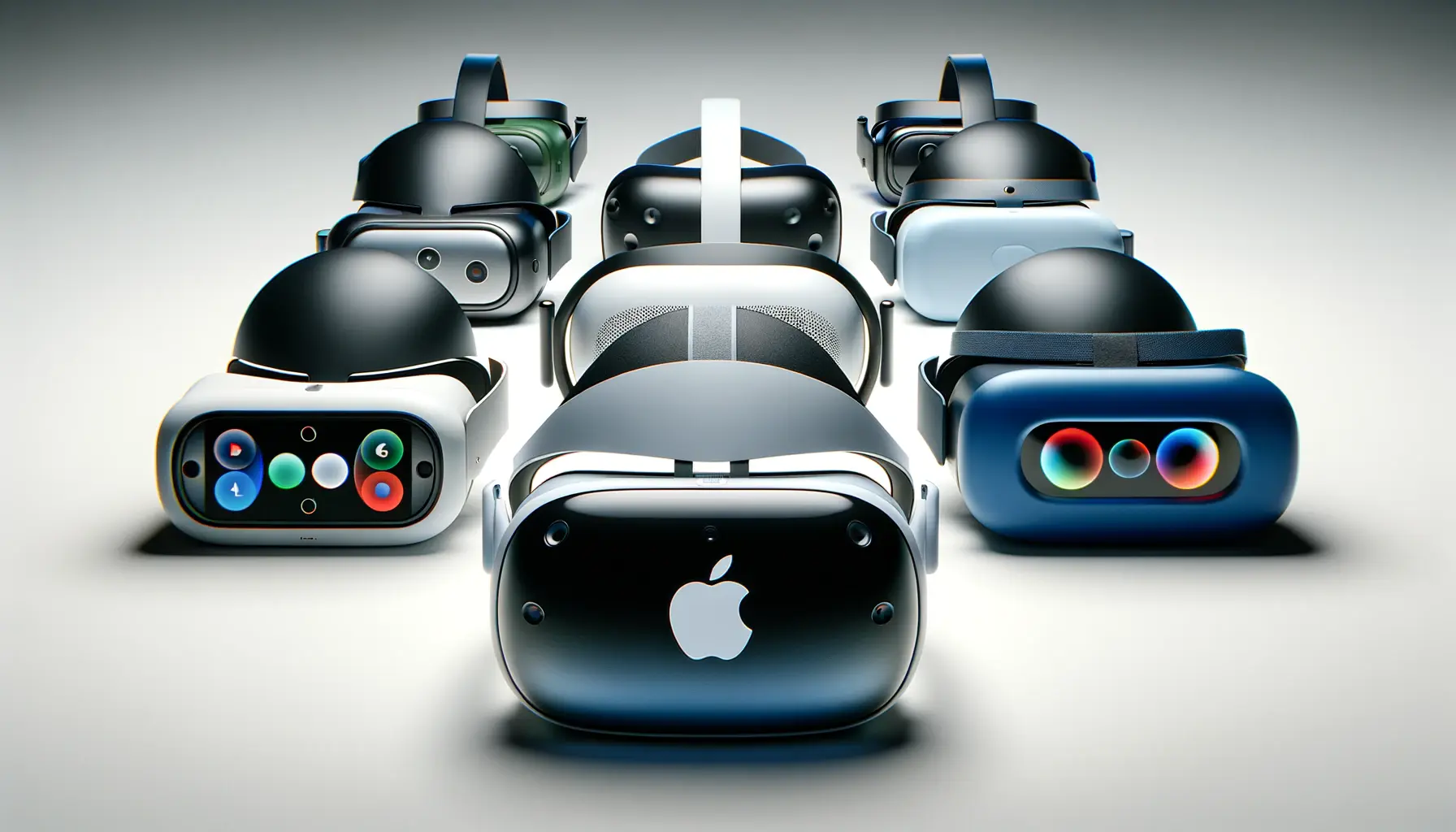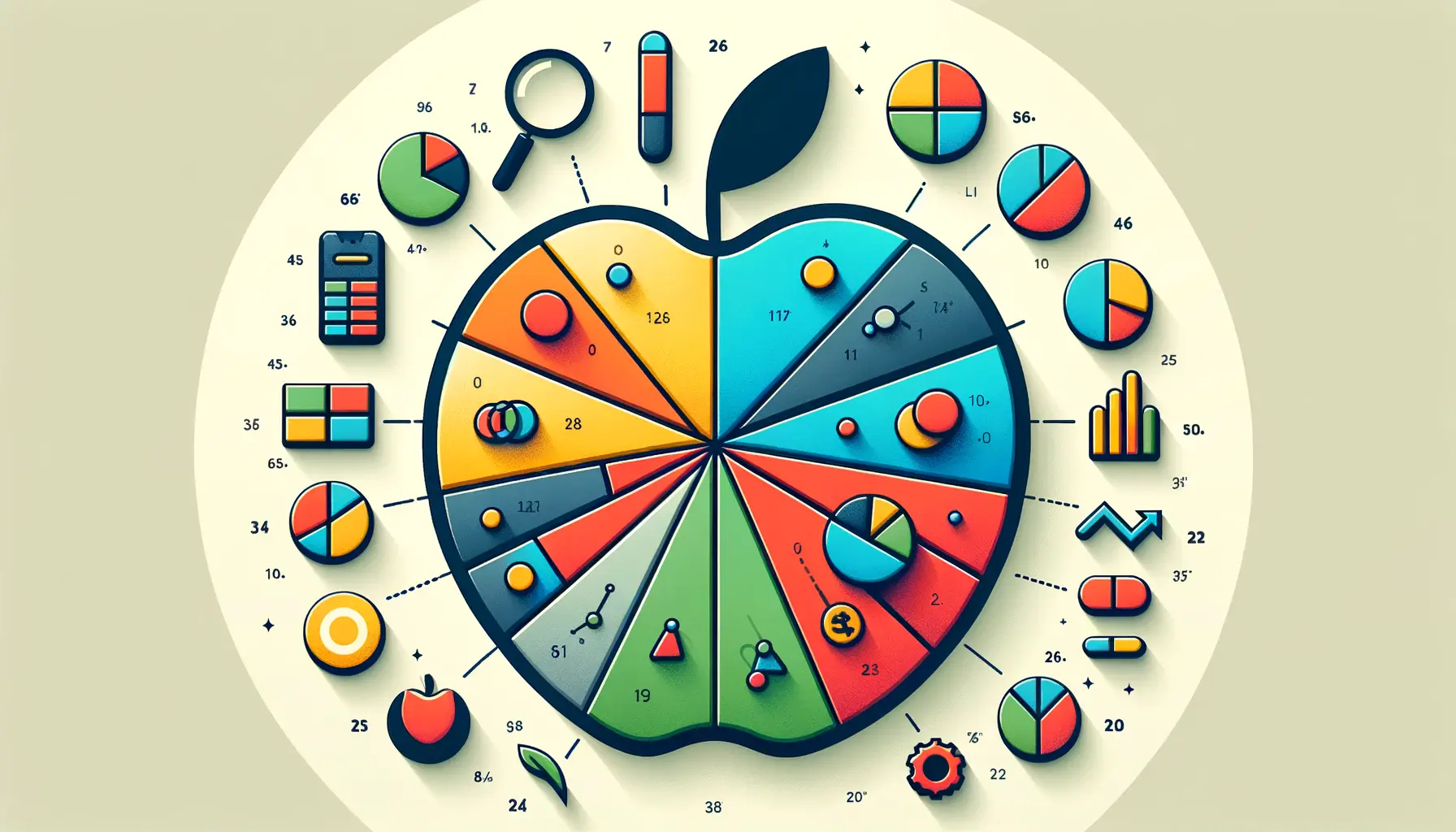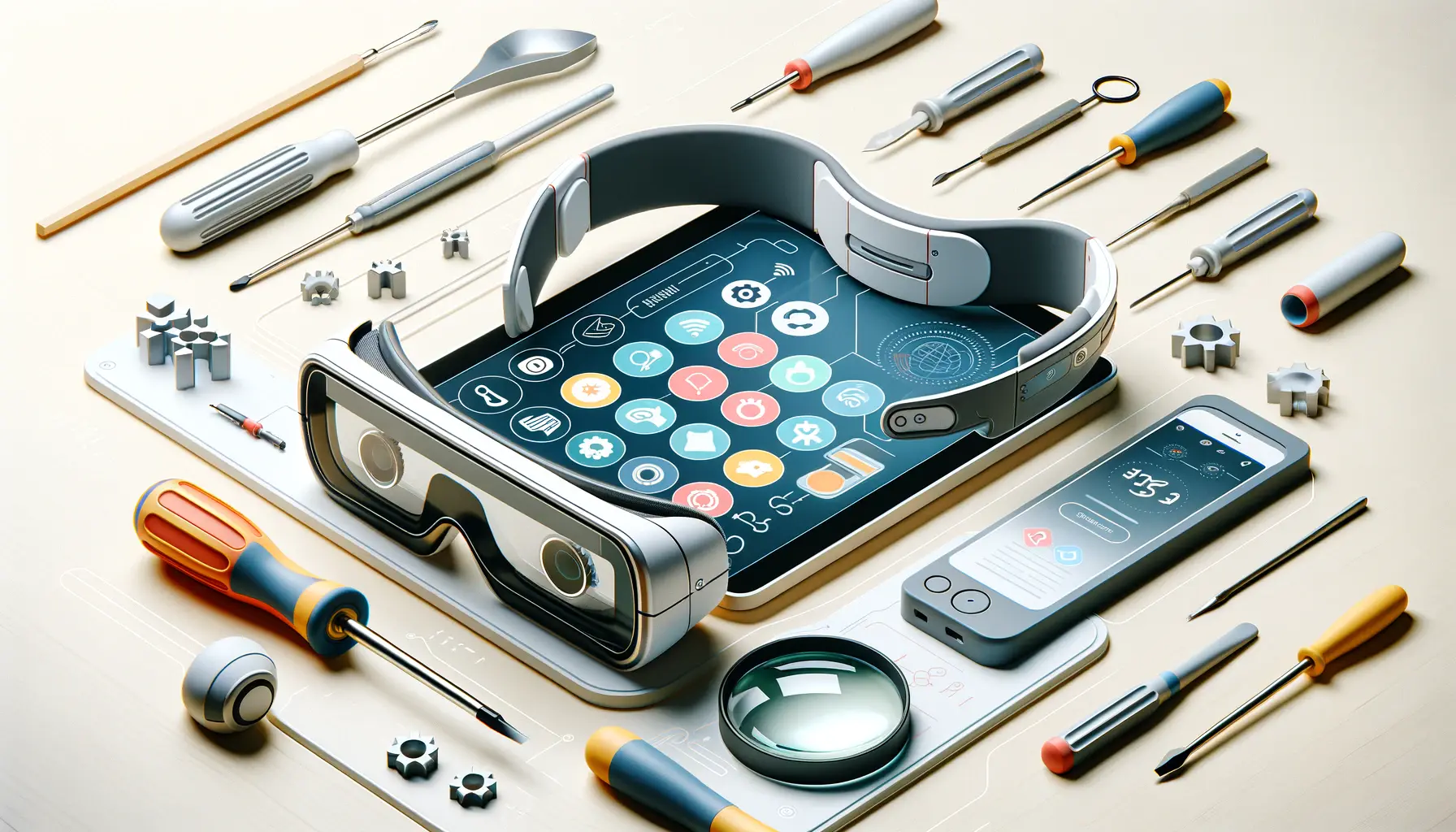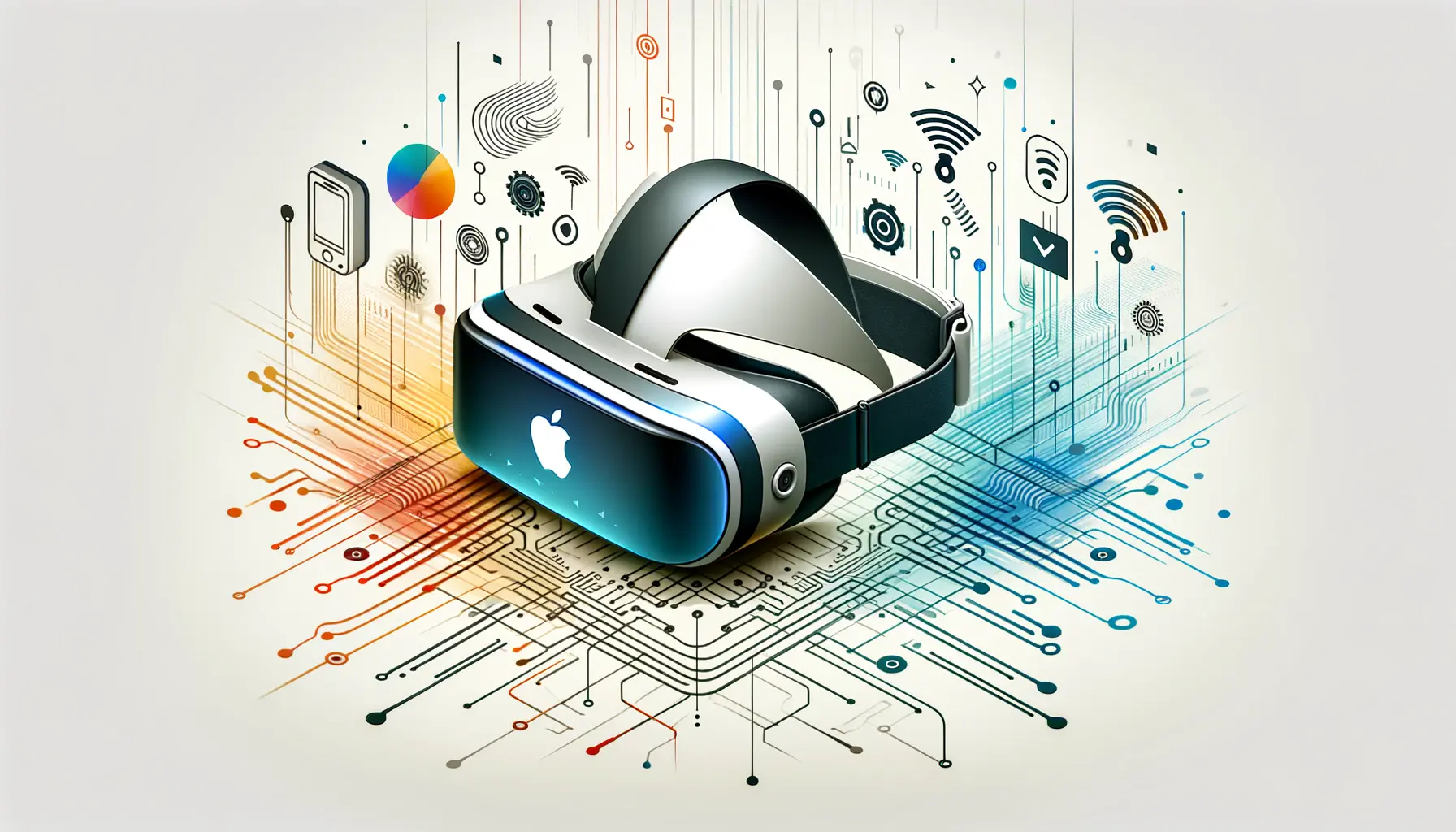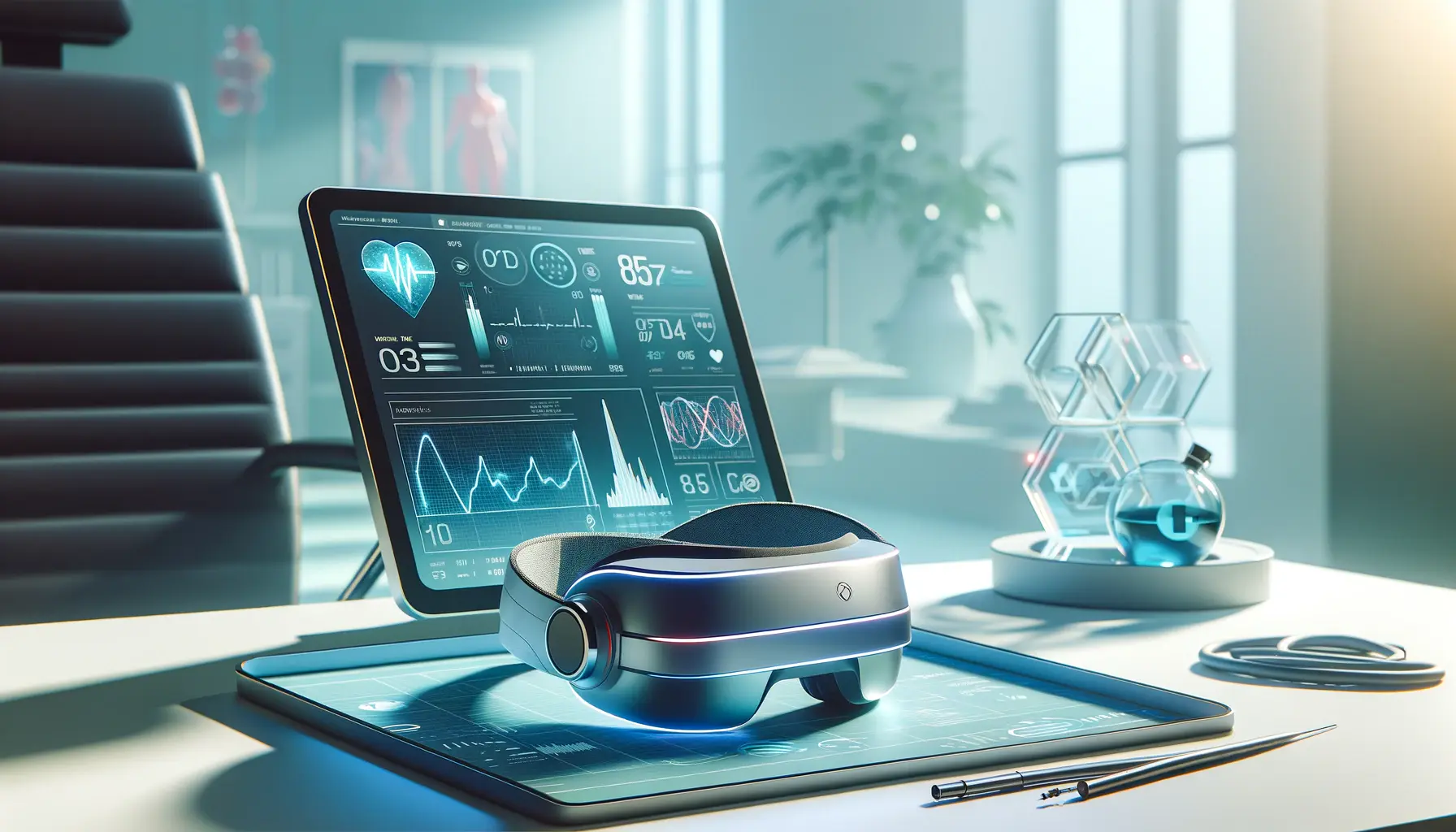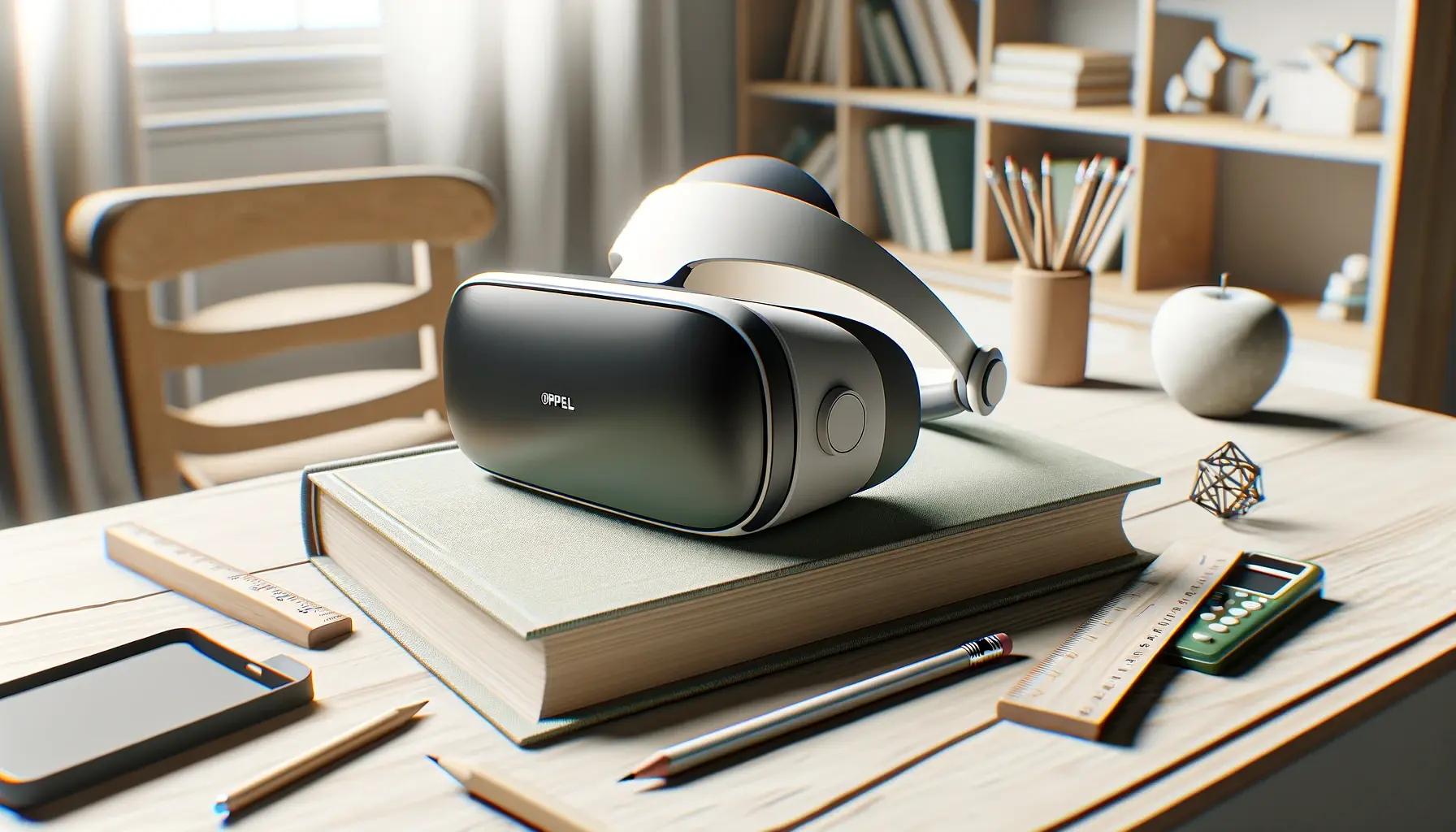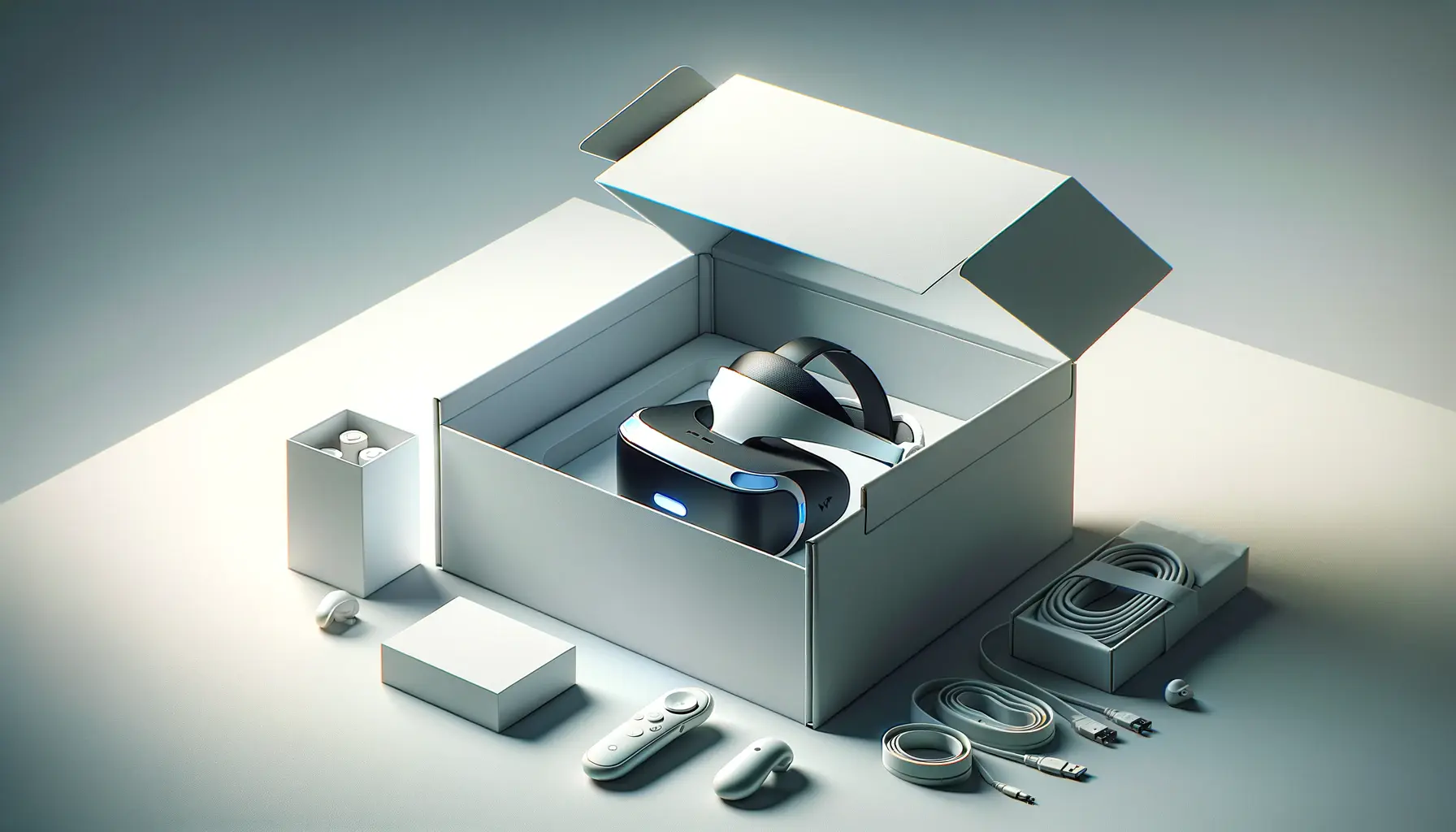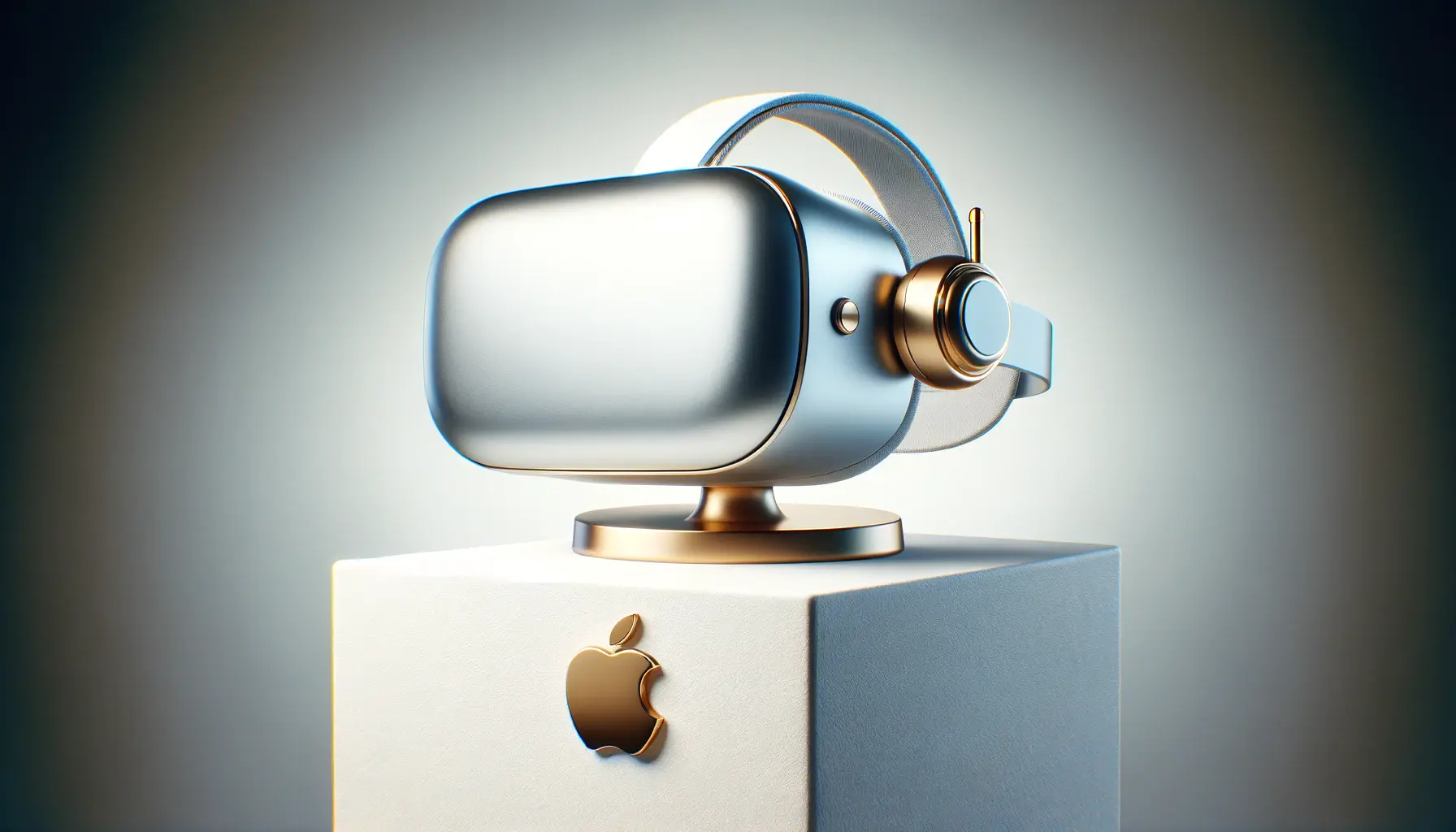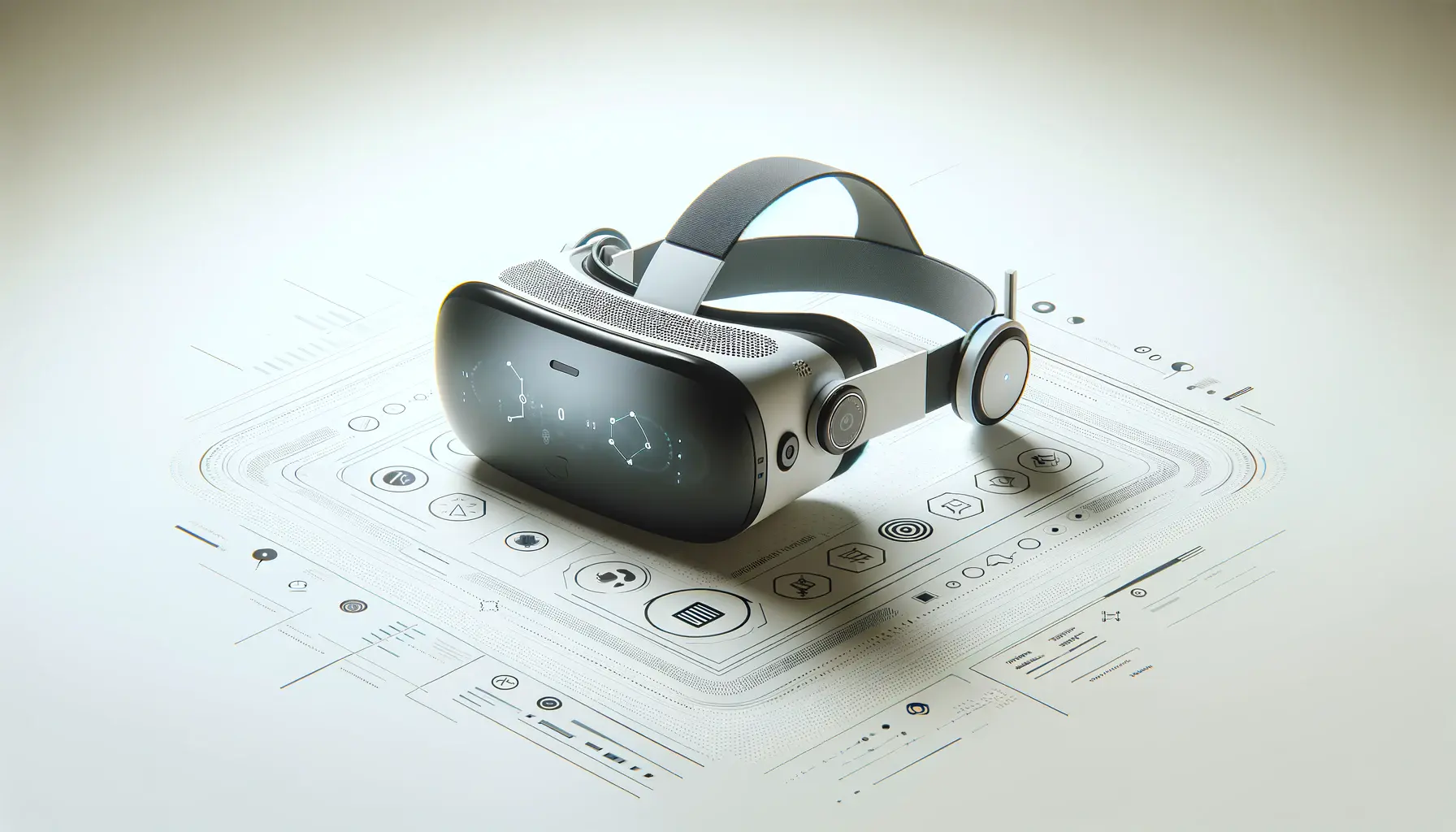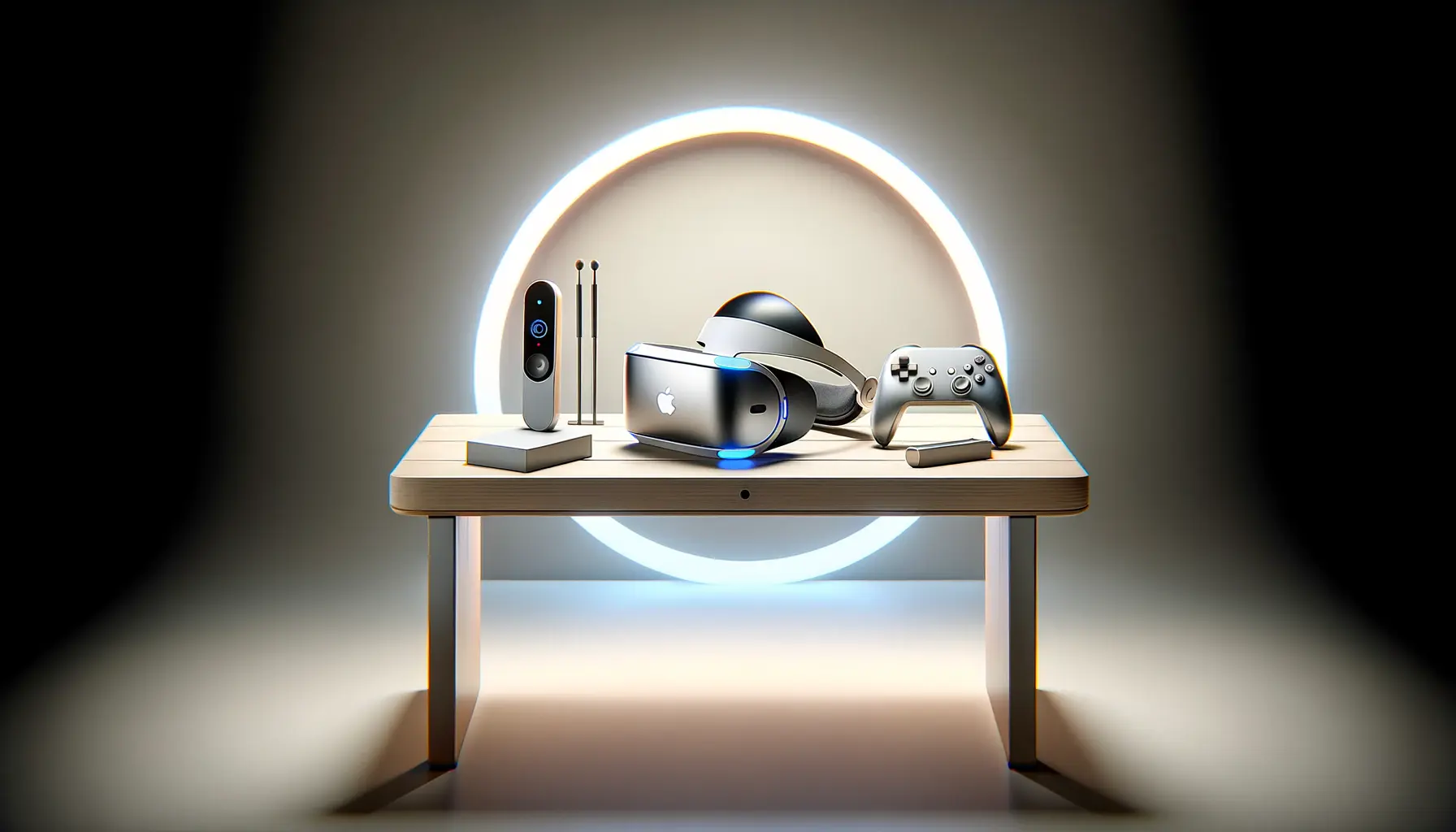The realm of augmented reality (AR) and virtual reality (VR) is witnessing an unprecedented technological evolution, with the Apple Vision Pro at the forefront of this transformation.
This innovative device not only encapsulates Apple’s foray into mixed reality but also sets a new benchmark for immersive experiences.
As we delve into the intricacies of the Apple Vision Pro and its competitors, it’s essential to understand the landscape of AR and VR technologies and how these devices are shaping the future of digital interaction.
The Apple Vision Pro, with its cutting-edge features and seamless integration with the Apple ecosystem, aims to redefine user experiences in AR and VR.
However, it’s not alone in the race.
Competitors like Meta Quest 2, Microsoft HoloLens 2, and others are also pushing the boundaries of what’s possible in mixed reality.
This article explores the key aspects of the Apple Vision Pro and its competitors, focusing on display quality, user interface, content ecosystem, and overall user experience.
- Apple Vision Pro and Its Market Position
- Key Features and Technological Advancements
- User Experience and Application Integration
- Challenges and Limitations
- Future Prospects and Innovations
- Consumer Adoption and Market Trends
- Exploring the Impact on Various Industries
- Embracing the Future: The Role of Apple Vision Pro and Competitors in Shaping AR/VR
- Apple Vision Pro vs. Competitors: Essential FAQs
Apple Vision Pro and Its Market Position
Revolutionizing Mixed Reality
The Apple Vision Pro marks a significant milestone in Apple’s product lineup, introducing a high-fidelity mixed reality experience that blends the digital and physical worlds.
With its advanced microOLED display, the Vision Pro offers stunning visuals that are unparalleled in the AR/VR market.
This leap in technology not only enhances visual content but also paves the way for new forms of storytelling and content consumption.
Apple’s strategic entry into the mixed reality space with the Vision Pro is a testament to the company’s commitment to innovation.
By leveraging its robust ecosystem, Apple aims to create a seamless experience for users, integrating the Vision Pro with existing Apple services and devices.
This ecosystem approach is a key differentiator, setting the Vision Pro apart from its competitors.
Competitive Landscape
The AR and VR market is highly competitive, with several key players vying for dominance.
Companies like Meta and Microsoft have established themselves as pioneers in this space, each offering unique products tailored to different segments of the market.
The Meta Quest 2, for example, has gained popularity for its affordability and extensive library of VR games and experiences.
On the other hand, the Microsoft HoloLens 2 caters to a more niche audience, focusing on enterprise applications and mixed reality experiences for professional use.
Despite the stiff competition, the Apple Vision Pro stands out for its premium build quality, high-resolution displays, and intuitive user interface.
However, its success in the market will depend on its ability to offer compelling content and applications that leverage its technological advancements.
As we explore the features and capabilities of the Vision Pro and its competitors, it’s clear that the battle for AR/VR supremacy is just beginning.
The Apple Vision Pro’s integration with the Apple ecosystem and its advanced display technology are key factors that set it apart in the competitive AR/VR market.
Key Features and Technological Advancements
The landscape of AR and VR technologies is defined by rapid innovation and the continuous pursuit of more immersive user experiences.
At the heart of this evolution are key features and technological advancements that distinguish each device.
The Apple Vision Pro, Meta Quest 2, and Microsoft HoloLens 2 each bring unique attributes to the table, catering to diverse user needs and preferences.
Let’s break down the critical technological components and features that define the Apple Vision Pro and how it compares to its main competitors:
- Display Quality: The Apple Vision Pro features a microOLED display, offering an exceptionally high resolution and vibrant colors. This contrasts with Meta Quest 2’s LCD and Microsoft HoloLens 2’s holographic display, highlighting the Vision Pro’s superiority in visual fidelity.
- User Interface and Interaction: Apple introduces an innovative hand-tracking and eye-tracking system, allowing for a more natural and intuitive user interface. This system is a step forward from the physical controllers of Meta Quest 2 and the gesture-based controls of HoloLens 2.
- Content Ecosystem: The strength of Apple’s ecosystem lies in its seamless integration across devices and services, promising a rich library of AR and VR content. Meta Quest 2 benefits from an established VR gaming community, while HoloLens 2 focuses on professional and enterprise applications.
- Wearable Comfort and Design: The design of the Vision Pro emphasizes comfort for extended wear, featuring a balanced weight distribution and soft materials. This design consideration is crucial for immersive experiences and contrasts with the bulkier design of the HoloLens 2 and the more utilitarian build of the Quest 2.
Technological Advancements in AR/VR
The advancements in AR and VR technologies are not limited to display quality and user interfaces.
Innovations in processing power, battery life, and spatial audio contribute significantly to the overall user experience.
The Apple Vision Pro leverages Apple’s proprietary chips for unmatched processing capabilities, ensuring smooth performance even in demanding applications.
Similarly, spatial audio technology in the Vision Pro creates a more immersive sound environment, enhancing the realism of virtual worlds.
In comparison, Meta Quest 2 and Microsoft HoloLens 2 have made strides in improving their hardware to support more complex applications and longer usage times.
However, the integration of these technologies with the broader ecosystem and user experience remains a challenge that Apple aims to address with the Vision Pro.
The continuous innovation in AR and VR technologies drives the industry forward, with each new device pushing the boundaries of what’s possible in immersive experiences.
User Experience and Application Integration
The true measure of any AR/VR device’s success lies in its user experience and the seamless integration of applications that leverage its technological capabilities.
The Apple Vision Pro, Meta Quest 2, and Microsoft HoloLens 2 each offer distinct experiences tailored to their target audiences, from casual consumers to professional users.
Understanding the nuances of user experience and application integration is crucial in evaluating these devices:
- Intuitive User Interface: The Vision Pro’s hand and eye tracking create a user interface that is both intuitive and futuristic, reducing the learning curve for new users. This level of intuitiveness is a significant leap forward from the traditional controller-based interaction in Meta Quest 2 and the gesture and voice commands of HoloLens 2.
- Application Ecosystem: Apple’s strong developer ecosystem suggests a promising future for Vision Pro applications, ranging from entertainment to productivity tools. Meta Quest 2 already boasts a vast library of VR games and experiences, while HoloLens 2 offers specialized applications for professional and industrial use.
- Immersive Content Consumption: The Vision Pro aims to transform content consumption with its high-resolution displays and spatial audio, offering an unparalleled media viewing experience. In contrast, Meta Quest 2 focuses on gaming and interactive experiences, and HoloLens 2 is geared towards augmenting professional tasks with mixed reality.
Enhancing Everyday Activities
The integration of AR/VR technologies into everyday activities marks a significant shift in how we interact with digital content.
The Vision Pro, with its emphasis on high-quality visual and audio experiences, is poised to redefine entertainment, education, and even remote work.
Meta Quest 2 and HoloLens 2, while differing in focus, also contribute to this shift by expanding the possibilities for gaming, training, and collaboration.
The potential for AR/VR devices to enhance everyday activities is vast, with applications ranging from virtual travel experiences to immersive educational programs and beyond.
The success of these applications hinges on their ability to integrate seamlessly with the device’s hardware and user interface, creating a cohesive and engaging experience for the user.
The evolution of AR/VR technologies is not just about hardware advancements but also about creating a holistic ecosystem that enriches user experiences across various aspects of life.
Challenges and Limitations
Despite the rapid advancements in AR/VR technology, there are still significant challenges and limitations that need to be addressed.
These challenges not only affect the user experience but also the adoption rate of these technologies.
Understanding these hurdles is crucial for both consumers and developers as they navigate the AR/VR landscape.
The Apple Vision Pro, Meta Quest 2, and Microsoft HoloLens 2 each face their own set of challenges, from hardware limitations to content availability:
- Cost and Accessibility: One of the most significant barriers to widespread adoption of AR/VR technology is the cost. The Apple Vision Pro, with its premium price point, may be out of reach for many consumers. In contrast, the Meta Quest 2 offers a more affordable entry into VR, though it still requires investment in compatible hardware and software.
- Content Ecosystem: The success of any AR/VR platform heavily relies on the availability of compelling content. While Meta Quest 2 has a robust library of games and experiences, the Apple Vision Pro and Microsoft HoloLens 2 are still building their content ecosystems, which could limit their appeal to early adopters.
- Wearable Comfort: For AR/VR technologies to be integrated into daily life, they must be comfortable to wear for extended periods. The bulkiness and weight of devices like the Microsoft HoloLens 2 can lead to user fatigue, a challenge that Apple and Meta have addressed with varying degrees of success in their latest models.
Overcoming Technological Hurdles
Addressing the technological hurdles of AR/VR devices requires innovation in hardware design, software optimization, and user interface development.
The balance between performance and comfort is a critical area of focus, as is the development of a diverse and engaging content library.
Companies like Apple, Meta, and Microsoft are continuously exploring new technologies and design philosophies to overcome these challenges.
Furthermore, the integration of AR/VR technologies with existing digital ecosystems presents both opportunities and challenges.
Ensuring compatibility and seamless user experiences across devices and platforms is essential for the long-term success of AR/VR technologies.
As the industry evolves, collaboration between hardware manufacturers, content creators, and service providers will be key to unlocking the full potential of AR/VR.
The path to mainstream adoption of AR/VR technologies is paved with challenges, but through continuous innovation and collaboration, these hurdles can be overcome.
Future Prospects and Innovations
The future of AR/VR technology holds immense potential, with ongoing innovations poised to further transform our digital interactions.
The advancements in this space are not just about enhancing gaming or entertainment experiences but also about revolutionizing education, healthcare, and industry.
As we look ahead, the trajectory of AR/VR innovations suggests a future where digital and physical realities merge seamlessly.
The Apple Vision Pro, Meta Quest 2, and Microsoft HoloLens 2 are at the forefront of this evolution, each contributing to the expansion of AR/VR applications beyond traditional domains:
- Augmented Workspaces: The integration of AR/VR technologies into work environments can enhance productivity and collaboration, especially in remote settings. Tools like virtual meeting rooms and 3D modeling applications are just the beginning, with future innovations likely to offer even more immersive and interactive workspaces.
- Immersive Education: AR/VR technologies have the potential to revolutionize education by providing immersive learning experiences that are not possible in traditional classrooms. From virtual field trips to interactive simulations, the possibilities for enhancing education with AR/VR are vast and largely untapped.
- Healthcare Applications: In healthcare, AR/VR technologies can improve patient care and medical training. Virtual reality can be used for surgical training, while augmented reality can assist in complex procedures by overlaying critical information directly onto the surgeon’s field of view.
Breaking Boundaries with AR/VR
As AR/VR technologies continue to evolve, we can expect to see even more innovative applications that break the boundaries of what is currently possible.
The development of lighter, more comfortable wearables, along with advancements in display and tracking technologies, will play a crucial role in making AR/VR a part of everyday life.
Moreover, the convergence of AR/VR with other emerging technologies like artificial intelligence and the Internet of Things (IoT) promises to create a more interconnected and intelligent digital ecosystem.
This convergence could lead to the development of smart environments that respond to our presence and actions in real-time, further blurring the lines between the digital and physical worlds.
The future of AR/VR is not just about technological advancements but also about creating meaningful experiences that enhance our lives in tangible ways.
Consumer Adoption and Market Trends
The adoption of AR/VR technologies by consumers is a critical factor that will determine the future trajectory of the market.
As these technologies become more accessible and integrated into various aspects of daily life, we are witnessing a shift in consumer behavior and expectations.
This shift is not only driving the demand for more immersive and interactive digital experiences but also shaping the development of AR/VR products.
Understanding the current market trends and consumer adoption patterns is essential for predicting the future of AR/VR:
- Growth in Consumer Demand: There has been a significant increase in consumer interest in AR/VR technologies, driven by advancements in hardware, a growing library of content, and the promise of more immersive digital experiences. This growing demand is reflected in the sales figures of devices like the Meta Quest 2 and the anticipation surrounding the launch of the Apple Vision Pro.
- Shift Towards Mixed Reality: While early AR/VR devices focused primarily on gaming and entertainment, there is a noticeable shift towards mixed reality applications that blend digital content with the physical world. This shift is expanding the use cases for AR/VR technologies, from education and healthcare to retail and beyond.
- Impact of Social VR: Social VR platforms are emerging as a significant trend, offering virtual spaces where users can interact, collaborate, and share experiences. These platforms are not only enhancing social connectivity in a digital age but also opening up new opportunities for content creation and consumption.
Market Trends Shaping the Future
The AR/VR market is evolving rapidly, with new players entering the space and existing ones expanding their product lines.
This dynamic market landscape is being shaped by several key trends:
- Increased Investment in AR/VR Startups: Venture capital investment in AR/VR startups is on the rise, signaling confidence in the long-term potential of these technologies. This influx of capital is fueling innovation and accelerating the development of new applications and devices.
- Collaboration Between Tech Giants: Collaborations and partnerships between technology companies are becoming more common, as they seek to leverage each other’s strengths to advance AR/VR technologies. These collaborations are crucial for overcoming technical challenges and creating more cohesive ecosystems.
- Focus on User Experience: As the AR/VR market matures, there is an increasing focus on improving the user experience, from reducing motion sickness to enhancing visual and audio fidelity. These improvements are essential for encouraging wider adoption of AR/VR technologies.
The future of AR/VR technologies will be shaped by how well they can meet consumer needs and integrate into everyday life, making user experience and accessibility key factors for success.
Exploring the Impact on Various Industries
The influence of AR/VR technologies extends far beyond the realm of gaming and entertainment, impacting a wide range of industries in profound ways.
As these technologies continue to mature, their potential to transform traditional business models and operational processes becomes increasingly apparent.
This transformation is not just about adopting new technologies but also about reimagining how businesses engage with their customers, train their employees, and create value.
Let’s explore the impact of AR/VR on various industries and how they are leveraging these technologies:
- Retail and E-commerce: AR/VR technologies are revolutionizing the retail industry by enhancing the online shopping experience. Virtual try-on solutions, 3D product visualizations, and virtual showrooms are just a few examples of how AR/VR is being used to bridge the gap between online and in-store shopping experiences.
- Real Estate and Architecture: In the real estate and architecture sectors, AR/VR technologies enable immersive property tours and architectural visualizations. This not only helps in showcasing properties in a more engaging way but also aids in the design process by allowing architects and clients to explore and modify designs in a virtual environment.
- Training and Education: AR/VR technologies are transforming training and education by providing immersive learning experiences that are not possible in traditional settings. From medical training simulations to virtual field trips, AR/VR is making learning more interactive and effective.
- Manufacturing and Maintenance: In manufacturing and maintenance, AR/VR technologies are being used for training, remote assistance, and process visualization. This helps in reducing errors, improving safety, and enhancing the efficiency of complex manufacturing and maintenance operations.
Driving Innovation Across Sectors
The adoption of AR/VR technologies across various industries is not just about leveraging new tools but also about driving innovation and creating competitive advantages.
By enabling more immersive and interactive experiences, AR/VR technologies are helping businesses to differentiate themselves in a crowded market.
Moreover, as these technologies continue to evolve, they will unlock new opportunities for innovation across sectors.
The potential for AR/VR to impact industries is limited only by the imagination of those who deploy it.
Whether it’s enhancing customer engagement, streamlining operations, or creating entirely new products and services, AR/VR technologies are set to play a pivotal role in the future of industry.
The misconception that AR/VR technologies are only relevant for gaming and entertainment is quickly being dispelled as more industries recognize their transformative potential.
Embracing the Future: The Role of Apple Vision Pro and Competitors in Shaping AR/VR
The journey through the landscapes of augmented reality (AR) and virtual reality (VR) reveals a future brimming with possibilities.
The Apple Vision Pro, alongside its competitors like Meta Quest 2 and Microsoft HoloLens 2, stands at the forefront of this technological revolution, each playing a pivotal role in shaping the trajectory of AR/VR.
As we delve into the impact of these devices, it becomes clear that their influence extends far beyond the realms of gaming and entertainment, touching upon various facets of our daily lives and industries.
The Path Forward for AR/VR Technologies
The exploration of AR/VR technologies through the lens of devices like the Apple Vision Pro illuminates the path forward for this burgeoning field.
The integration of these technologies into diverse industries highlights their potential to revolutionize how we interact with digital content, learn new skills, and even conduct business.
The future of AR/VR is marked by several key developments:
- Enhanced Immersion and Interactivity: Advancements in display, audio, and tracking technologies will continue to enhance the immersion and interactivity of AR/VR experiences.
- Wider Industry Adoption: From healthcare to education, and manufacturing to retail, more industries will harness AR/VR technologies to innovate and improve efficiency.
- Consumer Accessibility: As the technology matures and costs decrease, AR/VR devices will become more accessible to a broader audience, driving consumer adoption.
Challenges to Overcome
Despite the optimistic outlook, the journey ahead for AR/VR technologies is not without its challenges.
Issues such as device comfort, content availability, and user adoption rates pose significant hurdles.
However, with continuous innovation and a focus on improving user experience, these challenges can be addressed, paving the way for AR/VR to become an integral part of our digital lives.
Conclusion: A New Era of Digital Interaction
In conclusion, the Apple Vision Pro and its competitors are not just pioneering devices in the AR/VR market; they are harbingers of a new era of digital interaction.
As we stand on the brink of this exciting future, it is clear that AR/VR technologies have the potential to transform our lives in profound ways.
By embracing these innovations, we open the door to endless possibilities, where the boundaries between the physical and digital worlds blur, creating experiences that were once the realm of science fiction.
The future of AR/VR is bright, and the Apple Vision Pro, along with its competitors, will undoubtedly play a significant role in shaping this fascinating landscape.
If you're seeking expertise in Apple Search Ads campaigns, visit our service page for professional management!
Apple Vision Pro vs. Competitors: Essential FAQs
Delving into the world of augmented and virtual reality, here are the most frequently asked questions about the Apple Vision Pro and how it stands against its competitors.
Apple Vision Pro’s unique blend of high-resolution microOLED displays, advanced eye and hand tracking, and seamless ecosystem integration sets it apart in the AR/VR market.
Meta Quest 2 offers an affordable VR experience with a vast game library, contrasting with Apple Vision Pro’s premium immersive experience and ecosystem integration.
Yes, Apple Vision Pro is designed for both entertainment and professional applications, featuring advanced tracking and display technologies for productivity and design.
Apple Vision Pro is positioned as a premium product with a higher price point compared to competitors like Meta Quest 2, which is more affordable.
Yes, while Meta Quest 2 has a broad range of VR games, Apple Vision Pro is expected to leverage Apple’s ecosystem for a diverse range of AR/VR applications.
Apple Vision Pro utilizes microOLED technology for sharper images, whereas competitors like Meta Quest 2 use LCD displays, offering different visual experiences.
Apple Vision Pro introduces intuitive controls through eye and hand tracking, eliminating the need for physical controllers and enhancing user interaction.
Apple Vision Pro is designed for comfort during extended use, featuring balanced weight distribution and soft materials, a focus shared by its competitors.
